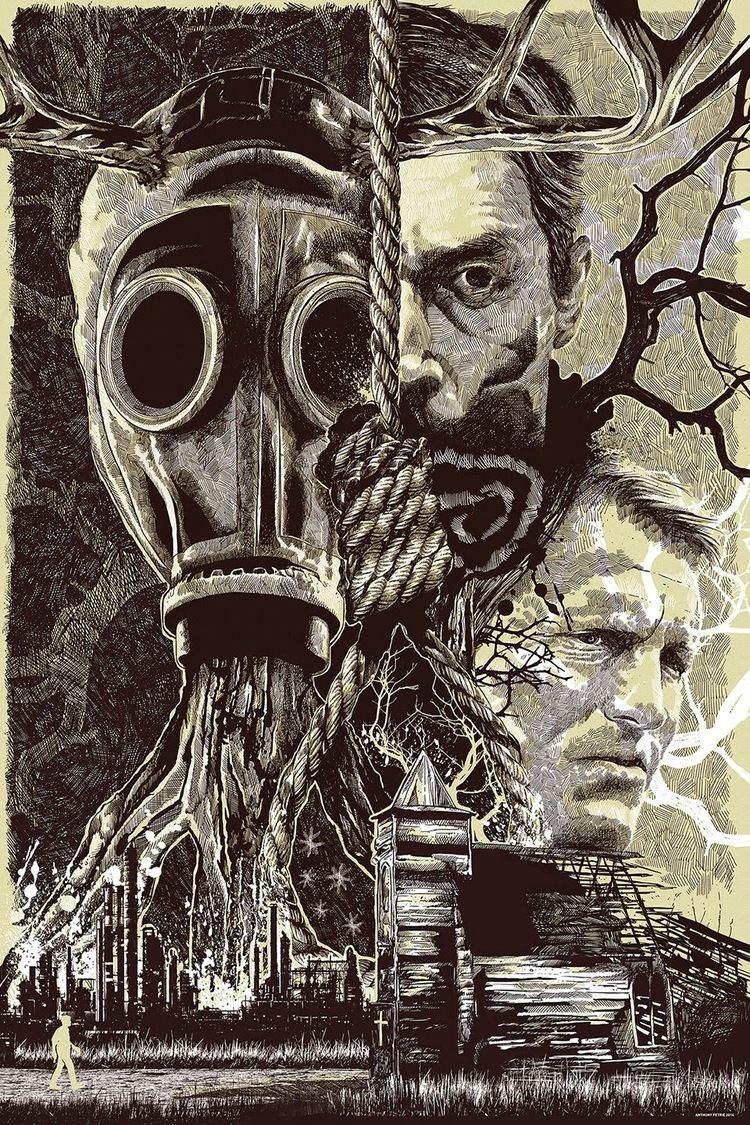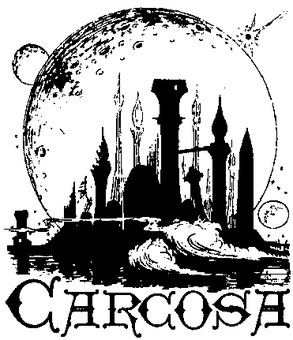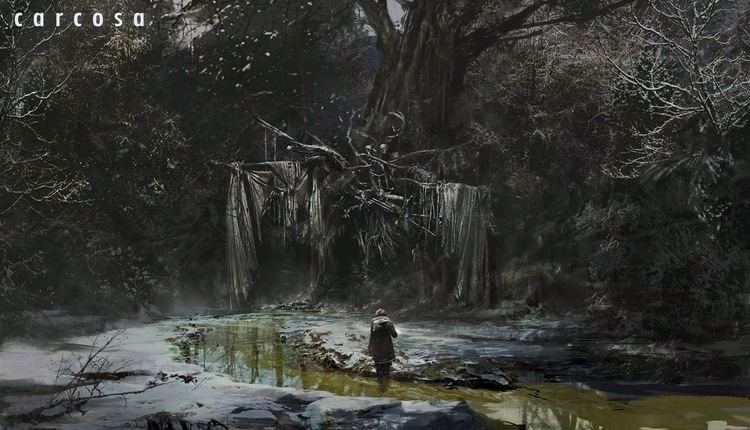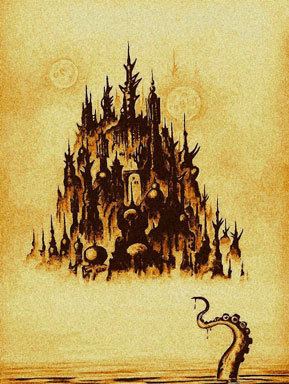True detective take off your mask carcosa scene
Carcosa is a fictional city in the Ambrose Bierce short story An Inhabitant of Carcosa (1886). In Bierce's story, the ancient and mysterious city is barely described, and is viewed only in hindsight (after its destruction) by a character who once lived there. Its name may be derived from the medieval city of Carcassonne in southern France, whose Latin name was "Carcaso".
Contents
- True detective take off your mask carcosa scene
- an inhabitant of carcosa by ambrose bierce classic horror readings by otis jiry
- The King in Yellow
- Associated names
- Written references
- Television
- Other References
- Publishers using the name Carcosa
- Carcosa House
- Works published by Carcosa House
- Carcosa
- Awards
- Works published by Carcosa
- Places called Carcosa
- References

American writers Robert W. Chambers and H.P. Lovecraft borrowed the term Carcosa for their stories, inspiring generations of authors to similarly use Carcosa in their own works.

an inhabitant of carcosa by ambrose bierce classic horror readings by otis jiry
The King in Yellow

The city was later used more extensively in Robert W. Chambers' book of horror short stories published in 1895 entitled The King in Yellow. Chambers had read Bierce's work and had also borrowed a few other names (including Hali and Hastur) from Bierce's work.

In Chambers' stories, and within the apocryphal play (also titled The King in Yellow) which is mentioned several times within them, the city is a mysterious, ancient, and possibly cursed place. The most precise description of its location given is that it said to be located on the shores of Lake Hali in the Hyades. The descriptions given of it seem to make it clear that it must be located on another planet, or possibly even in another universe.
For instance:

Associated names

Lake Hali is a misty lake found near the city of Hastur. In the fictional play The King in Yellow (obliquely described by author Robert W. Chambers in the collection of short stories of the same title), the mysterious cities of Alar and Carcosa stand beside the lake. As with Carcosa, it is referenced in the Cthulhu Mythos stories of Lovecraft and the authors who followed him.
The name Hali originated in Ambrose Bierce's "An Inhabitant of Carcosa" (1891) in which Hali is the author of a quote which prefaces the story. It is possible that the Hali referred to is the Urdu poet Maulana Hali. It is also possible that Hali refers to Haly Abenragel, a 10th-century astrologer. The narrator of the story implies that the person named Hali is now dead (at least in the timeline of the story).
Several other nearly undescribed places are alluded to in Chambers' writing, among them Hastur, Yhtill, and Aldebaran. "Aldebaran" may refer to the star Aldebaran, likely as it is also associated with the mention of the Hyades star cluster, with which it shares space in the night sky. The Yellow Sign, described as a symbol not of any human script, is supposed to originate from the same place as Carcosa.
One other name associated is "Demhe" and its "cloudy depths" − this has never been explained either by Chambers or any famous pastiche-writer and so we do not know what or who exactly "Demhe" is.
Marion Zimmer Bradley (and Diana L. Paxton since MZB's death) also used these names in her Darkover series.
Written references
Later writers, including H. P. Lovecraft and his many admirers, became great fans of Chambers' work and incorporated the name of Carcosa into their own stories, set in the Cthulhu Mythos. The King in Yellow and Carcosa have inspired many modern authors, including Karl Edward Wagner ("The River of Night's Dreaming"), Joseph S. Pulver ("Carl Lee & Cassilda"), Lin Carter, James Blish, Michael Cisco ("He Will Be There"), Ann K. Schwader, Robert M. Price, Galad Elflandsson, Simon Strantzas ("Beyond the Banks of the River Seine"), and Charles Stross.
Joseph S. Pulver has written nearly 30 tales and poems that are based on and/or include Carcosa, The King in Yellow, or other elements from Robert W. Chambers. Pulver also edited an anthology A Season in Carcosa of new tales based upon The King in Yellow, released by Miskatonic River Press in 2012.
John Scott Tynes contributed to the mythology of Chambers' Carcosa in a series of novellas, "Broadalbin", "Ambrose", and "Sosostris", and essays in issue 1 of The Unspeakable Oath and in Delta Green.
In Robert Shea and Robert Anton Wilson's The Illuminatus! Trilogy, Carcosa is connected with an ancient civilization in the Gobi Desert, destroyed when the Illuminati arrived on Earth via flying saucers from the planet Vulcan.
In maps of the world of George R. R. Martin's A Song of Ice and Fire, a city named Carcosa is labeled on the easternmost edge of the map along the coast of a large lake, near other magical cities such as Asshai. It is one of several references to Lovecraft in the series. In The World of Ice and Fire, it is mentioned that a sorcerer lord lives there who claims to be the sixty-ninth Yellow Emperor, from a dynasty fallen for a thousand years.
In the short story "Dinner in Carcosa", Western Canadian author Allan Williams re-imagines Carcosa as an abandoned Alberta prairie town with still-active insurance policies held by an ominous firm called "Hastur & Associates". The story revolves around a chance encounter between a young insurance adjuster and the Ambrosovich family.
In the satirical novel Kamus of Kadizhar: The Black Hole of Carcosa by John Shirley (St. Martin's Press, 1988), Carcosa is the name of a planet whose weird black hole physics figures in the story.
In David Drake's Lord of the Isles series, Carcosa is the name of the ancient capital of the old kingdom, which collapsed a thousand years before the events of the series.
In S.M. Stirling's Emberverse series, Carcosa is the name of a South Pacific city inhabited by evil people led by the Yellow Raja and the Pallid Mask
Television
In the HBO original series True Detective, Carcosa is a man-made temple created by the season one villain, an unindentified serial killer known as the "Yellow King". The temple, located in the back woods of Louisiana, serves as a place of ritualistic sexual abuse of children and child murder organized by a group of wealthy Louisiana politicians and church leaders. The main characters, Rust Cohle and Marty Hart, storm Carcosa in the final episode of the season, where they confront the killer, who has taken over the role of the "Yellow King".
Other References
In 1988 Rotting Christ album "Passage to Arcturo", the song "inside the eye of Algond" the singer nominates the Mystical Carcosa as part of his journey "I've arrived near to Arcturo Up to Mnar and the lake of Hali Up to ky-yian and the Mysthical Carcosa Up to Yantith and Y'XA-NULEI near to Insmuth"
In 2016 DigiTech released a Fuzz pedal called the Carcosa. The pedal featured two modes, named "Hali" and "Demhe."
Publishers using the name Carcosa
Two different publishers have used the name Carcosa.
Carcosa House
Carcosa House was a science fiction specialty publishing firm formed by Frederick B. Shroyer, a boyhood friend of T. E. Dikty, and two Los Angeles science fiction fans, Russell Hodgkins and Paul Skeeters in 1947. Shroyer had secured a copy of the original newspaper appearance of the novel Edison's Conquest of Mars by Garrett P. Serviss which he wished to publish. Shroyer talked Hodgkins and Skeeters into going in on shares to form the publisher which issued the Serviss book in 1947. Dikty offered advice, and William L. Crawford of F.P.C.I. helped with production and distribution. Carcosa House announced one other book, Enter Ghost: A Study in Weird Fiction, by Sam Russell, but due to slow sales of the Serviss book, it was never published.
Works published by Carcosa House
Carcosa
Carcosa was a specialty publishing firm formed by David Drake, Karl Edward Wagner, and Jim Groce, who were concerned that Arkham House would cease publication after the death of its founder, August Derleth. Carcosa was founded in North Carolina in 1973 and put out four collections of pulp horror stories, all edited by Wagner. Their first book as a huge omnibus volume of the best non-series weird fiction by Manly Wade Wellman. It was enhanced by a group of chilling illustrations by noted fantasy artists Lee Brown Coye. Their other three volumes were also giant omnibus collections (of work by Hugh B. Cave, E. Hoffman Price, and again by Manly Wade Wellman). A fifth collection was planned, Death Stalks the Night, by Hugh B. Cave; Lee Brown Coye was working on illustrating it when he suffered a crippling stroke in 1977 and eventually died, causing Carcosa to abandon the project. The book was eventually published by Fedogan & Bremer. Carcosa also had plans to issue volumes by Leigh Brackett, H. Warner Munn and Jack Williamson; however, none of the projected volumes appeared. The Carcosa colophon depicts the silhouette of a towered city in front of three moons.
Awards
Works published by Carcosa
Places called Carcosa
In 1896-7 the Carcosa mansion was built as the official residence of the Resident-General of the Federated Malay States for the first holder of that office, Sir Frank Swettenham. It is currently in use as a luxury hotel, the Carcosa Seri Negara. Swettenham took the name from The King in Yellow.
